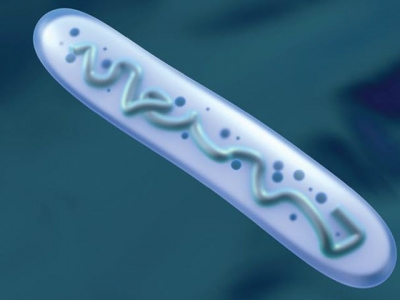Poultry health: understanding prebiotic, probiotic roles

Lactobacillus is a commonly used component of probitoics, and its beneficial properties have been known since the 1960s. | Spectral-Design, Bigstock.com
Learn the difference between prebiotics and probiotics and how each feed additive works in a chicken’s gastrointestinal tract to improve health, performance.
Growing demand for antibiotic-free poultry means more broiler and egg producers re-evaluating their choice of feed additive. Prebiotics and probiotics are increasingly popular choices, but the difference between the two additives is not always fully understood.
While complementary to each other, prebiotics and probiotics are not necessarily interchangeable in a bird’s diet, nor are they the same in how they affect gut microbes.
They feature different modes of action and stem from different origins. They may be used in poultry diets independently, or in combination, to help producers accomplish the desired outcomes of enhanced health and productivity.
Nor are they new. For instance, the use of probiotics in farm animals dates back 75 years, but in the 1960s, for the first time, it was demonstrated that Lactobacillus could significantly stimulate growth in pigs.
Prebiotics
Prebiotics act as a food source for the good bacteria that are already living in the chicken’s gastrointestinal (GI) tract and have been shown to support health and performance.
More formally, a prebiotic is a specialized, non-digestible carbohydrate that beneficially sustains the good bacteria already in the GI tract. A prebiotic is not a microorganism. It is a sort of nourishment source for existing bacteria, allowing the existing normal colony within an animal’s gut to grow naturally and reproduce.
Prebiotics may be obtained from several sources including certain yeast cell walls, such as Saccharomyces cerevisiae.
Prebiotics are complex sugars, (usually oligomers) but not all sugars are prebiotics. Many sugars are digestible by poultry and are used as an energy source.
However, chains of the sugar mannose, for example, are not readily absorbed by birds but can serve as a nutrient source for bacteria residing in the GI tract. Mannose, as a simple sugar or as a chain of molecules (mannan oligosaccharides), also may allow certain pathogens to bind to it rather than to the intestinal cell of the bird, reducing the severity of infections.
Several prebiotic compounds have been incorporated into poultry nutrition, including:
- Non-digestible oligosaccharides such as fructooligosaccharide (FOS)
- Non-digestible mannan oligosaccharides (MOS)
Probiotics
Probiotics are also known as “direct fed microbials” and are a live microbial feed additive that beneficially affects the host animal by improving its intestinal balance. In short, probiotics are the “good” bacteria that live in the GI tract.
They work by competitive exclusion, meaning that when adequate populations of probiotic bacteria are present, they reduce the ability of pathogenic bacteria to get out of control and overwhelm the host. Put simply, they crowd pathogens out. They also work by specifically inhibiting pathogenic growth.
Livestock probiotics commonly feature various strains of Bacillus, Lactobacillus, Enterococcus and Saccharomyces yeast. There is still much to learn about their interactions with pathogens, but it is understood that certain strains of Bacillus have been proven to decrease growth of certain strains of pathogenic bacteria including E. coli, Clostridium, Streptococcus, and Salmonella.
Probiotics help to prevent and control gastrointestinal pathogens and/or improve the performance and productivity of production animals through various mechanisms. Closely related strains may differ in their mode of action.
The joint Food and Agriculture Organization of the United Nations (FAO) and World Health Organization (WHO) Working Group defines probiotics as “live microorganisms which, when administered in adequate amounts, confer a health benefit on the host.”
Additionally, probiotics act as a regulator for the immune system. For instance, microbial communities can support the animal's defense against invading pathogens by stimulating gastrointestinal immune response. This may aid the development of the immune system by stimulation of the production of antibodies and increased white blood cell activity.

The 'good bacteria' act by crowding out pathogens in the gastrointestinal tract, and help to improve overall performance. | alenaohneva, Bigstock.com
Synbiotics
Often, probiotics and prebiotics are combined into feed additives to compound synergistic effects. These are referred to as synbiotics.
As prebiotics furnish better conditions for probiotics to expand, the colonies of these “good” bacteria are maintained. Studies have shown that by using the benefits of prebiotics and probiotics, the number of desirable bacteria in the digestive system increases and demonstrates positive effects on health status.
Ultimately, prebiotics, probiotics and combinations thereof hold tremendous potential to positively influence poultry health and productivity — and the ability of poultry producers work in the most efficient and effective manner.
Related news
 Managing poultry gut health without antibiotics
Managing poultry gut health without antibiotics To optimize bird performance in antibiotic-free production systems, it is essential to manage the intestinal microbial community
 Life without antibiotics in poultry production
Life without antibiotics in poultry production A big challenge in antibiotic-free poultry production is the control ofcoccidiosis, which can lead to necrotic enteritis.
 Controlling poultry gut health for maximum performance
Controlling poultry gut health for maximum performance Paying careful attention to feed ingredients and additives can optimize poultry gut health, performance.